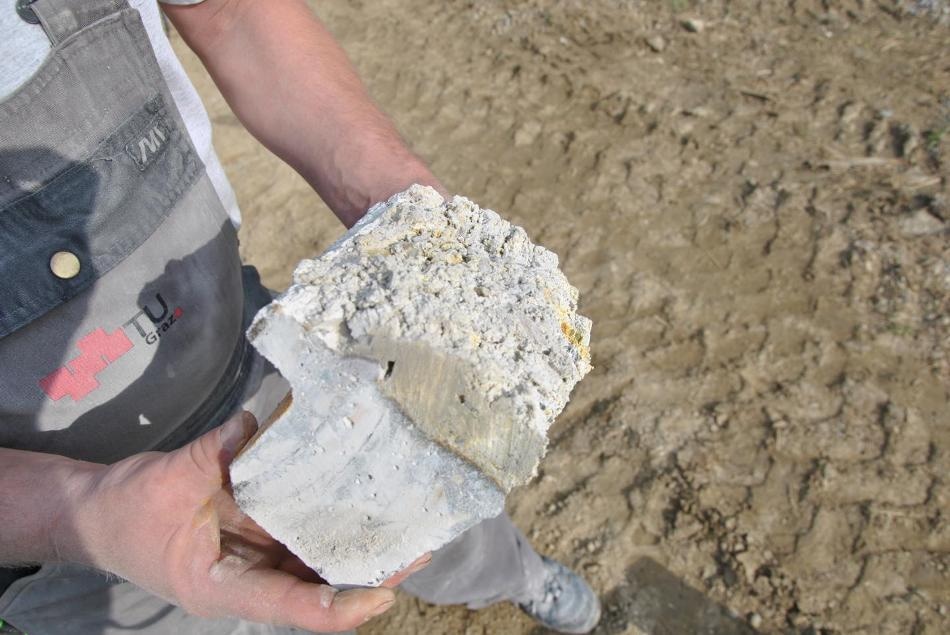Feb 26 2018
 Microbial induced concrete corrosion (MICC) causes massive damage to wastewater plants. Austrian Researchers from Graz present a new solution against the sulphuric acid attack. (CREDIT - ©TU Graz)
Microbial induced concrete corrosion (MICC) causes massive damage to wastewater plants. Austrian Researchers from Graz present a new solution against the sulphuric acid attack. (CREDIT - ©TU Graz)
Wastewater systems form a part of every community’s infrastructure. In a perfect world, they function well and are long-lasting. However, biogenic transformation processes in sewage and water treatment systems are a "natural enemy" of conventional plants, often causing damage to concrete and metal elements, which is expensive to repair.
Consequently, it is not unusual for wastewater systems to have a service life of below ten years before they need to be revamped or separate components replaced. Lethal gases emitted during biogenic processes, such as hydrogen sulfide, also pose a major health risk, causing a variety of symptoms from irritation to respiratory failure and death.
Writing in the journal Water Research, an interdisciplinary team of scientists from TU Graz and the University of Graz have drawn strategies aimed at preventing what is called microbial induced concrete corrosion (MICC). The team comprises two TU Graz staff members - Cyrill Grengg of the Institute of Applied Geosciences and Florian Mittermayr of the Institute of Technology and Testing of Construction Materials - as well as Günther Koraimann of the University of Graz's Institute of Molecular Biosciences.
Microbial induced concrete corrosion: turning a blind eye not the answer
MICC often corrodes the conventional types of concrete used in wastewater treatment plants at a rate of a centimetre or more per year. Accordingly, the concrete elements can be destroyed in a matter of only a few years, causing significant damage to wastewater systems.
Cyrill Grengg, Institute of Applied Geosciences, TU Graz
According to the researchers, there is frequently a lack of awareness of these processes and the ensuing threat to wastewater infrastructure and human health. "Closing the manhole covers and looking the other way is not the answer," Grengg added. In just Germany, the economic impact of wastewater system repairs is put at about EUR 450 million annually. Although no data are presently available for Austria, the costs can be inferred and also applied to other European countries.
MICC in wastewater treatment facilities is caused by a sequence of biogenic sulfate reduction reactions, followed by reoxidation. To begin with, sulfate in pressure pipelines or standing wastewater is reduced by bacteria under anaerobic - or oxygen-free - circumstances, forming hydrogen sulfide. This pungent, extremely poisonous gas escapes into the sewer air and diffuses into manholes and sewer pipes. There, reoxidation by autotrophic bacteria occurs on concrete walls that are not even in contact with wastewater. These microorganisms create sulfuric acid which reacts with concrete construction elements.
This leads to the vigorous formation of a biofilm on the surface of the concrete, a reduction of the pH value to below two, in other words highly acidic, and extensive formation of new minerals, mainly in the form of gypsum. The combination of these processes results in the rapid destruction of the concrete.
Günther Koraimann, Institute of Molecular Biosciences, University of Graz
Holistic solution
The Graz-based researchers worked on an all-inclusive solution using an interdisciplinary research approach. Comprehensive research into the microstructural and microbiological processes was followed by the creation of new MICC-resistant materials in close partnership with the Institute of Construction and Building Materials at TU Darmstadt. In this context, geopolymer concrete proved to be largely well suited to endure acid corrosion. When developing this building material, resistance to acid was a very desirable property, as were extremely anti-bacteriostatic surfaces, on which the research team made noteworthy advances - microorganisms that activate the initial oxidation process are not able to settle on such surfaces in the first place. In turn, this stops the formation of sulfuric acid.
We achieved some very promising results with materials that have a far greater lifespan than conventional types of concrete. Use of these long-lasting materials would allow operators to refurbish damaged wastewater systems, significantly extending their service life and reducing the financial burden on local government and wastewater associations.
Florian Mittermayr, Institute of Technology and Testing of Construction Materials, TU Graz
The team published their recent findings on MICC prevention in the latest issue of the journal Water Research 134 (2018) 341 - 352: "Advances in concrete materials for sewer systems affected by microbial induced concrete corrosion: A review."
The Austrian province of Styria provided financial support for the research, and is dedicated to raising awareness of this universal problem among Styrian local authorities and regional wastewater associations.